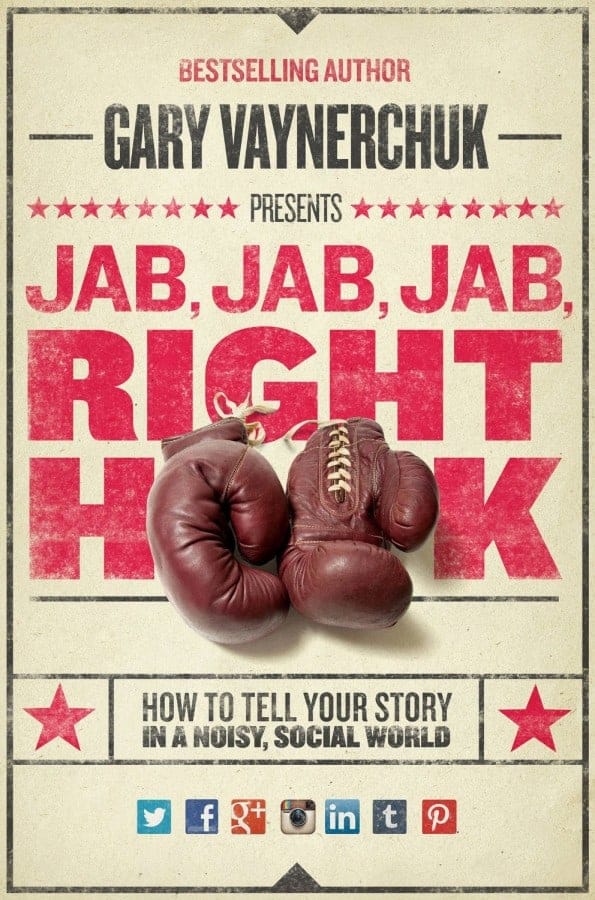 Last week I finally had a chance to read Jab, Jab, Jab, Right Hook: How to Tell Your Story in a Noisy Social World by Gary Vaynerchuk. Gary is best-selling author and wiz when it comes to social media. In a culture where social media is pervasive, this book is really a must-read for any person or brand with a message to share.
Last week I finally had a chance to read Jab, Jab, Jab, Right Hook: How to Tell Your Story in a Noisy Social World by Gary Vaynerchuk. Gary is best-selling author and wiz when it comes to social media. In a culture where social media is pervasive, this book is really a must-read for any person or brand with a message to share.
The book is filled with both strategy and tactics. I tried to narrow my highlights to the ten key thoughts that stretched my thinking.
- Share your story. “No matter who you are or what kind of company or organization you work for, your number-one job is to tell your story to the consumer wherever they are, and preferably at the moment they are deciding to make a purchase.” // In church, it’s not about a purchase. Instead, we’re hoping people will take their next step toward Jesus Christ. It’s a different goal, but the principle still applies.
- Use “jabs” and “right hooks.” — “Jabs are the lightweight pieces of content that benefit your customers by making them laugh, snicker, ponder, play a game, feel appreciated, or escape; right hooks are calls to action that benefit your businesses.” // I’ve seen pastors only jab, and I’ve seen communicators and teachers try to only land right hooks. You need both.
- Deliver the call to action. — “Today’s perfect right hooks always include three characteristics: They make the call to action simple and easy to understand. They are perfectly crafted for mobile, as well as all digital devices. They respect the nuances of the social network for which you are making the content.” // This is a great formula for making sure our message has impact on every distinct platform.
- Deliver content in the right context. — “Content is king, but context is God. You can put out good content, but if it ignores the context of the platform on which it appears, it can still fall flat.” // This is why some teachers can share great content and still not get any response. How the content is delivered given the context really matters.
- Determine what you want people to feel. — “Ads and marketing are supposed to make consumers feel something and then act on that feeling.” // This goes beyond determining the action you want people to take. Instead, you’re getting at what motivates them to take the action.
- Don’t add to the overload. — “The days of stopping people from what they’re doing to look at your ad are at best diminishing, and more than likely over, and regardless are overpriced for the ROI.” // If you’re trying to compete for people’s attention through advertising and promotions, you’re already losing the battle.
- Acknowledge everyone is on Facebook. — “Only the most stubborn holdouts, mostly from companies working B2B or just contrarians, question whether their customer is actually on Facebook and whether it’s worth maintaining a presence there.” // Your church has a website. So what? How are people engaging with your Facebook presence?
- Choose engagement over information. — “If you want to maximize your eyeballs, it’s not enough to get people to read your article or buy your product—you have to get them to engage with it so that it spreads.” // When you communicate, your priority isn’t to share information–it’s to engage a response.
- Show you care. — “People love to be entertained and informed, but they’ll take that from anyone. The real connection, and the loyalty, happens when they believe that you care…” // People will not listen to you until they trust that you care about them.
- Be brief. — “The shorter your content and storytelling, the better.” // And that’s particularly true if you want your content to be shared by others.
Though this book is primarily addressing social media strategies and tactics, the principles certainly apply to other aspects of communications. I challenge you to pick up a copy and read it. I think you’ll find it pushes you to revisit how you communicate your message.







